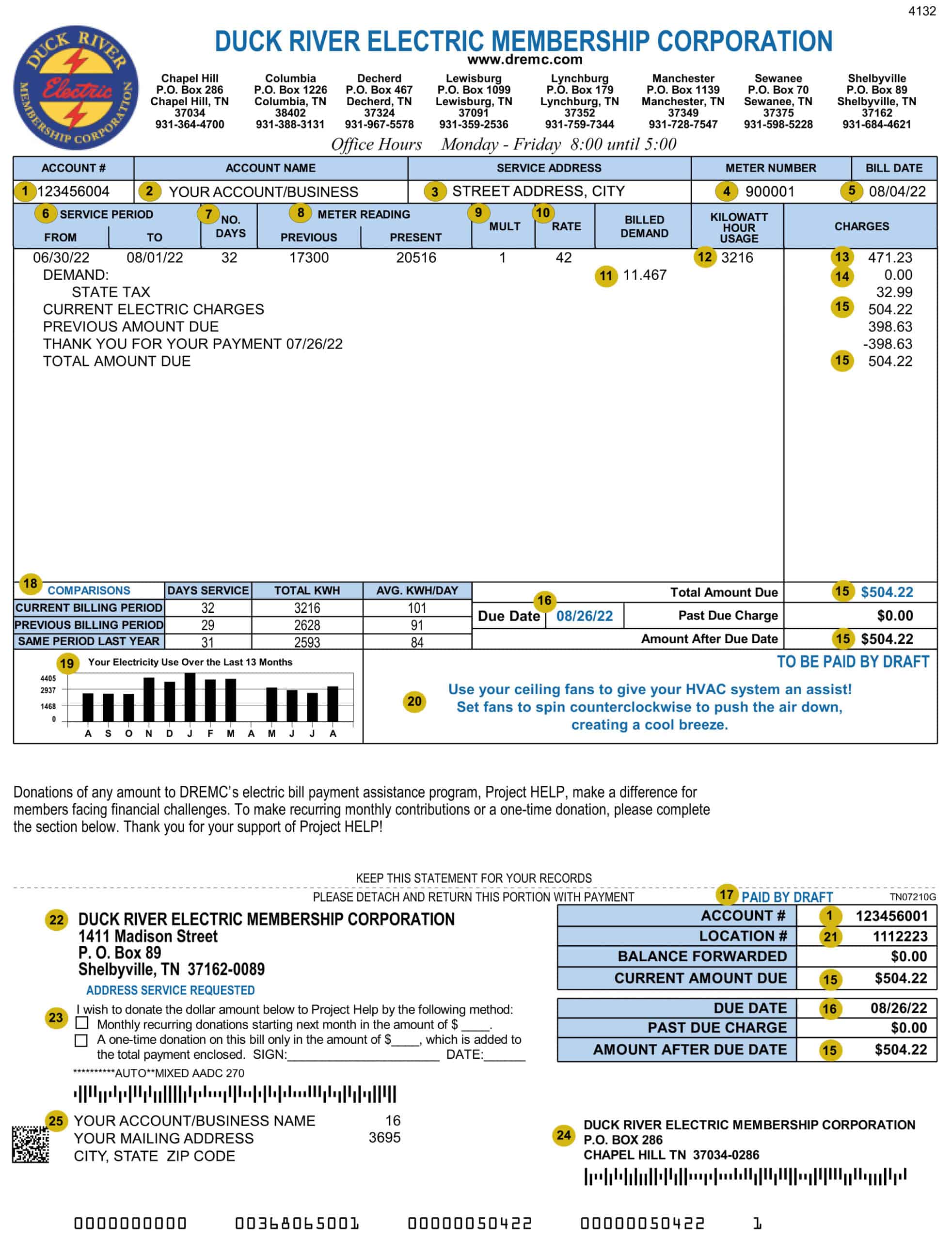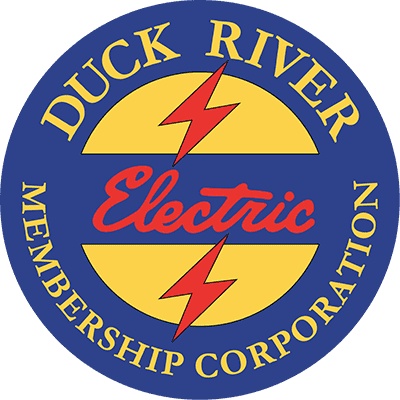
DREMC Commercial Bill Explanation
1 – This is the unique account number for electric service at this location.
2 – This is the name the account is listed under upon establishing service.
3 – The service address is the physical location address where service is established.
4 – The meter at the location has a unique number and is used for identification purposes.
5 – This is when the bill/invoice was printed for the current billing cycle.
6 – The service period is the timeframe, typically 30 days, that the current bill includes.
7 – This is how many days are included in the billing cycle for the service period.
8 – Previous and present meter readings are shown each month and used to calculate the current bill.
9 – A multiplier is used at locations where CT meters (current transformer meters) are installed to calculate electricity. Typically, these meters are installed where larger amounts of energy are used, like businesses and where multiple structures are connected to one meter. On the sample invoice, a multiplier of 1 means no multiplier is used; the kWh measured by the meter are 1:1 ration.
10 – The rate classification refers to the particular rate schedule used for billing purposes.
11 – The demand is the average electrical load (measured in kW) measured over 30 minutes.
12 – The kilowatt-hour use is based on the amount of electricity used and measured by the meter.
13 – The energy charge is for energy used during the billing cycle (measured in kilowatt-hours). A fuel cost adjustment charge is included in the energy rate and is based on the cost of fuel purchased to generate electricity such as coal and natural gas.
14 – The demand charge is the charge for the highest kilowatt demand recorded during the billing period. Commercial members are not billed a demand charge unless demand exceeds 60 KW during the month’s billing period.
15 – The total amount due for the account.
16 – This is when the payment is due to avoid a late fee. The due date is the same each month for this location.
17 – In the sample billing, the member opted in to pay by automatic bank draft. Paying by draft ensures timely payments to avoid penalty amounts.
18 – Each bill includes historical data for the current and previous months’ electric use and the same month of the previous year to help you compare kilowatt use.
19 – The 13-month trendline chart compares electric use and shows how seasonal changes affect your bill. The kWh use is the energy used during the billing cycle that is calculated from the meter readings and multiplier.

20 – In this area each month, DREMC shares important messages related to your electric service.
21 – The location number is an engineering reference for DREMC mapping purposes.
22 – This is DREMC’s headquarters mailing address.
23 – DREMC gives members the opportunity to donate $1 or more each month to Project HELP. By completing this section on the bill, you are opting in to participate. DREMC will include the amount of your donation on the following months’ billing statements until you discontinue participation in the assistance program.
24 – DREMC has eight district offices; the mailing address for the district office serving your area will be included here.
25 – This is the address where the bill will be mailed. If this address changes, please notify DREMC to ensure account information is up to date.
